Resources by Kathleen D. McCallie
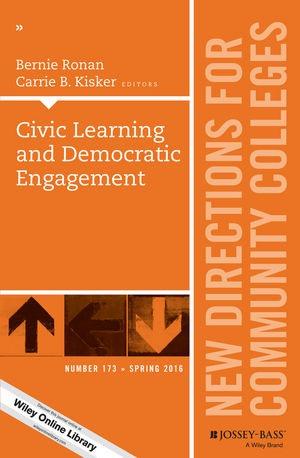
New Directions in Community Colleges, may be an unfamiliar journal to many scholars in theology and religion, but growing interest in community colleges as transformational contexts warrants attention. This edition presents scholarship on ethical and pedagogical issues of civic engagement in higher education. Recording workshops at the Kettering Foundation convened by Derek Barker collaborating with editors, Ronan and Kisker, these authors share the conviction that higher education should promote democratic values. Without fully acknowledging controversial aspects of that claim, they explore common ground working for social mobility, civic agency, and democratic practices such as voting, public discourse, and advocacy. Contributors reflect on two reports, both published in 2012: “Advancing Civic Learning,” representing the work of the U.S. Department of Education, and “A Crucible Moment,” written by the National Task Force on Civic Learning and Democratic Engagement, work of the American Association of Colleges and Universities. Both reports address educational goals of preparing engaged citizens who transfer civic skills like capacities for communicating, leading, organizing, and advocating from the classroom to workplace, public, and personal settings. Furthermore, the integration and assessment of civic learning and democratic engagement across educational programs from formal curriculum to extracurricular opportunities offered insight for building institutional support or resources for others innovative programs. For instance, Carrie Kisker surveyed sixty community colleges asking whether civic engagement was a goal stated in missions or strategic plans with dedicated infrastructure and incentives in tenure or advancement process. She found diversity of approaches but high level of integration in curriculum and encouragement in extracurricular programs. However, her findings document a lack of a standardized instrument to assess civic engagement and the need for more study of institutionalized support. Other highlights include David Matthews’s proposed deliberative pedagogy which he linked to timely questions about authority and legitimacy in the public mandate for institutions of higher education. For example, John J. Theis cited the problems of people losing confidence in each other and in institutions, drawing on Carcasson’s work noting that the “expert model” usually dominates higher education in ways that disempowers collective action (43). The authors connect their work as educators with enduring questions of ethics, cultural identities, and inequality. Significant numbers of students learning about religious studies and theology are enrolled in classes at community colleges with more racial and economic diversity than most seminary or elite college and university classes. Despite the lack of prestige or attraction these settings may have for many faculty, community colleges are rich in ability to shape citizens and hence the future of our communities. Furthermore, although many seminaries and religious studies departments compete fiercely and perpetuate bitter rivalries to attract students, community colleges seem better able to collaborate with each other and learn together in ways institutions for teaching religion and theology would do well to study. Since religious institutions also need leaders with civic competencies, theological educators concerned with the future will find the journal provocative. Especially those educators committed to promoting the common good, social justice, and public engagement will benefit from reading this book.
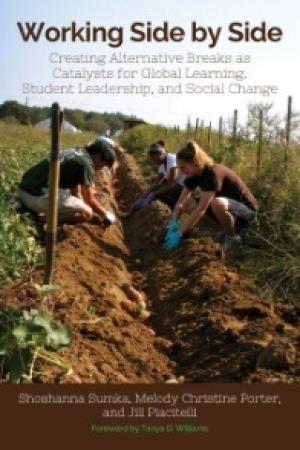
Sumka, Porter, and Piacitelli offer both the history and strategy of an emerging educational model that crosses borders between disciplines to develop competencies and leadership characteristics for social change. The authors document “short-term, student-run immersion service trips” designed to sharpen critical thinking and deepen commitment to future action for social justice (8). In this study their primary example of the alternative break movement is an organization called Break Away that grew out of Vanderbilt University. This and other new programs like the Alternative Break Citizenship school (ABCs) are rooted in efforts from the 1960s that experimented in transformational learning experiences combining travel, intercultural dialogue, collective action, and critical theorizing. A common denominator of these programs is the goal of social justice education. One theoretical framework undergirding these programs is an “active citizen continuum” pointing the way toward authentic relationships for life-long reflection, action, and community enrichment (10). The integration of critical theory and practice moves participants beyond charity and critical theorizing to active citizenship and intercultural competence. A key component of these programs is student leadership. By practicing the actual implementation of the model from the planning and training stages, students gain confidence and facility with each step of the work. In addition to providing the history and theory behind the programs, this book offers practical details contributing to the success of the learning. Readers find pointers on working relationships between staff and students as organizers and leaders of the trips, the alcohol and drug free policy, clarification of the roles of staff versus student leaders, as well as ideas about training, assessing, and fund-raising. The study would be strengthened by further development of the concept of justice. Despite the significance of social justice to this work, little attention is given to making explicit what is meant by justice. Similarly, the concept of global learning could be explored in relationship to literature on intercultural dialogue, collective action, and transcending political borders. Although this book provides an introductory discussion of what community means, contrasting communities of affinity versus communities of geography, the extensive body of work in philosophical and critical theory developing that distinction is not acknowledged (351). In other words, the academic and intellectual strands contributing to this model are not noted with as much care as the recent history of the particular program. This is a compelling read for anyone interested in learning that fosters authentic relationships rooted in “values of social justice, dignity, empowerment, and capacity building” (33). Although religious and theological frameworks are not discussed directly, schools or educators who offer immersion or intercultural learning experiences will benefit from reading this research. The authors’ caution about the tendency to slip toward do-gooder tourism, poverty tourism, and forms of educational travel where privileged students unwittingly perpetuate legacies of colonialism is timely and relevant.The conclusion of this book includes observations about the “need for inspiration and collective action” (359). If faith communities hope to be known as sources of inspiration and collective action in the future, this book offers potential for fertile common ground.
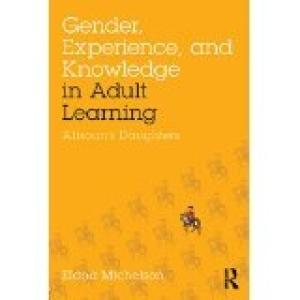
Institutions of higher education can treat the life experiences of adult learners as raw student material – material that requires expert educators to transform it into knowledge. Elana Michelson questions hegemonic tendencies in higher education that often perpetuate dualism of mind versus body as well as dismissive attitudes about the value of embodied knowledge. Her argument that “professional discourse concerning experiential learning remains rooted in the disembodied Enlightenment knower” rings true in theological education as well as other areas of scholarship (38). When claims of knowledge need to be authorized in some way, the process of authorization is always embedded in power relationships. Michelson elucidates these relationships through her examination of institutional assessment of life experience for academic credit. Her book serves as a window for surveying epistemological issues of trends in higher education. Academic scholars continue to question the legitimacy of learning from experience. Michelson traces the history of the program Assessment of Prior Experiential Learning (APEL), as it originated from liberal educational ideals responding to needs of returning war veterans after World Wars I and II. College equivalency assessment and training programs met needs for “both relevance and access” (103). Similar programs were generated globally with changes in educational multiculturalism and class mobility. The need for systems that evaluate experiential learning in order to assign academic credit and professional credentials continues to be furthered by globalization. Michaelson examines more recent developments in APEL as it responds to corporate and technical pressures on higher education. Michelson enlists Alisoun, the wife of Bath from Chaucer’s Canterbury Tales, as a memorable symbol of the canny, shrewd, embodied insight that stands in contrast to the orthodox knowledge of formal scholars and clerics. The figure of Alisoun creatively questions gendered polarities of body versus mind in the history of what counts as knowledge. Alisoun’s critique of the church’s leaders has a persuasive force while questioning textual authority, misogynistic attitudes of the priesthood, and orthodoxy’s monopoly on interpretation. Michelson beautifully illustrates her argument connecting tales of old wives like Alisoun with M.M. Bakhtin’s symbol of carnival as metaphor for the “transgressive possibilities of experiential learning” and “subversive knowledges” which may pose challenges to the economic and political structures of formal education (189). Although Michelson does not address theological education directly, religious studies programs and theological schools with programs in field education and contextual learning will benefit from her study. Authorization for ministry is changing rapidly. Consider an applicant for a Doctor of Ministry program who does not have a Master of Divinity degree but has decades of pastoral experience. Experiential knowing may be valuable, but how can that value be assessed? Unfortunately, people seem capable of failing to learn from their experience, so explicating the processes that facilitate learning from experience requires more study. Institutions of higher education or authorizing bodies who oversee workplace competencies must assess knowledge in terms of preparedness to practice professional tasks. Michaelson’s study would be stronger if she directly addressed specific examples of practical challenges of assessing the worth of experiential knowledge in consistent and fair ways. However, her book makes an important and timely contribution to the discourse on learning theory and will be valuable to those in religious studies and theological education, especially regarding intersections with critical-race theory, queer theory, and feminist theory.
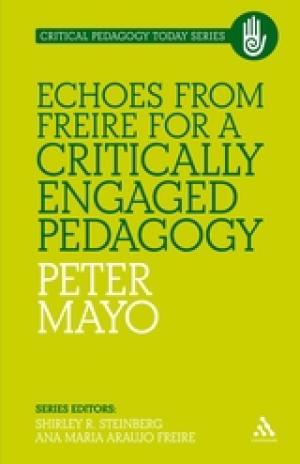
Whose side are we on when we teach (4)? Theological education and religious studies have sometimes been the type of elitist, domesticating education that Paulo Freire warned against – education that supported colonial powers. Peter Mayo’s book is not written specifically for teachers in seminaries or religious studies, but it offers both challenge and resources for profound reflection on issues of the politics of knowledge relevant to all theological and religious work. Mayo calls educators to move toward social justice and revitalization of the public sphere in ways reminiscent of Freire. Through Mayo, readers find companions in liberating movements for an authentically dialogical approach to education. What’s more, Mayo offers encouragement through his awareness of the movements of “globalization from below,” insisting on integration of theory and practice for substantive democracy. First, Mayo poses pedagogical and philosophical questions situating Freire’s contribution in the tradition of John Dewey’s “education for democracy” (36). Readers must consider Mayo’s judicious acknowledgement of both the excesses and contributions of socialism, Marxism, and Neo-Marxist thought. Furthermore, readers are challenged to consider ways their pedagogy approaches knowledge as dynamic rather than static (92). Next, Mayo explores common ground for potential partnerships rooted in shared work and theory. Postcolonial, peace activist, anti-racism, neo-Marxist, liberation feminist, and other emancipatory educators will find companions in this call to confront the spread of hegemonic global capitalism. Like an invitation to a remarkable symposium, the gift in Mayo’s book is an introduction to the work of key figures who echo Freire including: Lorenzo Milani, Margaret Ledwith, Julius Nyerere, Paula Allman, Antonia Darder, and Henry Giroux. Each of these thinkers invites study in their own diverse contexts. Mayo points out common threads of shared praxis and analysis in their work providing directions for further study and unifying a growing movement. In this way, Mayo’s book offers encouragement for those engaged in critical, emancipatory work. Despite evidence of increasing militarism and corporate encroachment on daily life, the reader finds sustaining encouragement in growing global movements for social transformation. We are encouraged by robust manifestations of Freire’s influence that extend from Brazil around the world, in places including: Malta, Italy, California, Nottingham, England, Rhode Island, and Tanzania. Mayo illustrates local educators/actors confronting corporate globalization while at the same time weaving together transnational networks of support. Educators in theology and religious studies will find rich resources for pedagogy that is both critical and emancipatory in this volume. The breadth of voices included and the depth of Mayo’s familiarity with Freire’s ethos and writing spark new dialogue for transformational teaching. Although this book could be accused of being overly ideological, those making such an accusation could be called to examine their own political commitments for complicity with systems of injustice. If teachers were true to Freire’s vision, we would be in conversation with each other across borders and cultural contexts. Mayo both models and invites us to join that work uniting reflection and action. Problems of xenophobia, racism, and cultural accommodation persist in theological education and religious studies as well as other forms of higher education. Educators interested in political mobilization, community development, and liberating praxis will find Mayo posing key problems in transformative ways.
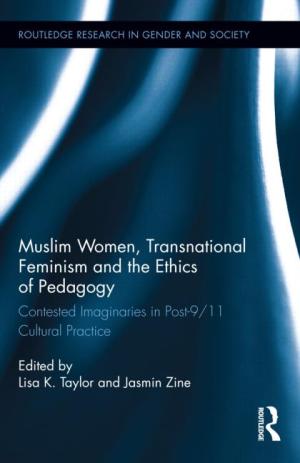
Speaking about her identity as a Muslim woman, spoken-word poet Sofia Baig said, “At a certain point, you have to raise your voice and fight to take it back” (275). In that spirit, this volume unites reflection and action for transformational pedagogy. By teaching readers to recognize negative stereotypes about Muslim women and exposing complicity with imperialism in some uncritical forms of multiculturalism, these essays make a significant contribution to social justice education. Collectively these authors model the transnational feminist praxis they propose. The volume offers a treasury of references to Muslim women artists as well as caution about the ways that some authentic voices have been commodified and co-opted. Interviews with artists expand and enrich the scholarly examination of pedagogical questions regarding authority, agency, representation, and identity. Contributors present an impressive array of arguments that problematize pervasive errors in “liberal” or “Western” feminism because it has contributed to simplistic and oppressive images of Muslim women in ways that feed the justification for violence, war, and imperialism. For example, Megan MacDonald effectively demonstrates how glib ideals of the “universality of global sisterhood” can be co-opted to justify “the occupation’s military industrial agenda” if Muslim women are reduced to oppressed victims in need of rescue (39). Similarly, Catherine Burwell warns about exploitive trends in marketing and uncritical reading of fiction featured by North American women’s book clubs that sometimes perpetuate those negative images. Over and over, these writers examine the dangers of depoliticizing and disconnecting women’s voices from historical context. At the same time, these scholars call for art and critical education in both public and academic settings that broadens and deepens antiracist, anticolonial, transnational feminist cultural production. For instance, the creation of the “Hijabi Monologues,” by Sahar Ishtiaque Ullah actively counters the “conflation of Middle East and Arab and Muslim” (286). Readers get a glimpse of what Mehre Gomez Fonseca calls “pedagogical means to unlearn Arabphobia and Islamaphobia” (198). These artists, scholars, and educators warn readers against unethical use of some literature written by Muslim women that is quite well known. At the same time, they introduce readers to new artists whose work may be less familiar. Full transcripts of interviews with Muslim women artists include: conversations with novelist Mohja Kahf, documentary filmmaker and writer Zarqa Nawaz, curator and writer Rasha Salti, editor and publisher Tayyibah Taylor, spoken-word poet Sofia Baig, theater director and writer Sahar Ullah, and visual artist Jamelie Hassan. Social justice educators committed to antiracism, anticolonialism, and transnational feminism will appreciate this corrective to mistakes that many of us have unwittingly made. Readers find suggestions for anticolonial praxis such as “ethical practices for reading across difference” examining privilege and power, and opening up “space of dialogue, debate, and dissent” (195). The book will be of particular interest to those who teach religious studies, feminist studies, and multicultural literature.